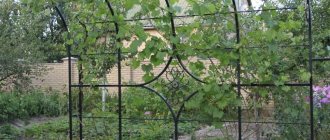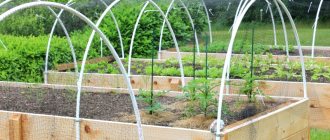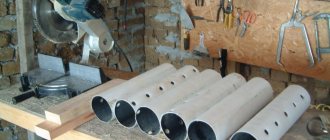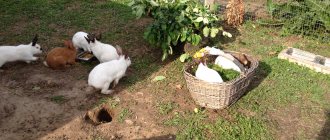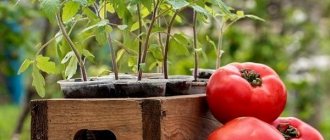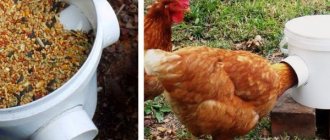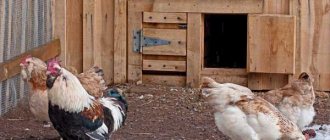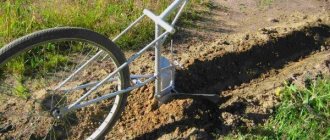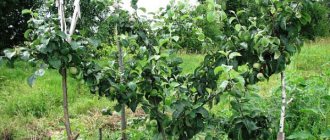Why use shelving
Before arranging a window sill, you need to understand for what purpose the rack or shelf is used to place pots and other containers with seedlings on it.
If you are an avid gardener or summer resident, then you know how and where to grow seedlings.
The main condition for good growth is the optimal amount of light, humidity and temperature.
It is not for nothing that window sills turn out to be the most practical and functional place for such tasks.
Preparing to build a rack
The first step is to decide what type of rack you plan to build. A stationary rack is suitable for gardeners who regularly grow seedlings in large quantities. The rest of the time, when the rack is not used for its intended purpose, you can store things, children’s toys, and display indoor plants from around the house on the shelves. A collapsible rack is a salvation for small apartments. After the end of the planting season, such equipment is stored in a garage or other utility room. A window rack is suitable as a replacement for a greenhouse. Mobile and not taking up much space, it will not attract the attention of guests and home owners.
Basic requirements for racking
A rack for seedlings can be made from various materials, but in any case it should be:
- durable;
- suitable for repeated use;
- convenient, i.e. provide comfortable conditions for caring for plants (it is important to have quick access to seedlings for watering, inspection and loosening);
- having an aesthetically attractive appearance.
The dimensions of the structure can be completely different, but racks with the following parameters are considered universal:
- number of shelves – from 3 to 6;
- the length of the shelves is sufficient to accommodate standard fluorescent lamps (i.e., from 50 cm);
- height between shelves – from 40 to 50 cm;
- the distance from the floor to the bottom shelf is from 10 cm.
Often the bottom shelf is used to store various garden tools or household items.
If you do not plan to keep seedlings on the last shelf, the top of the rack can be left open by installing front and rear horizontal supports instead of the top shelf. They will not only support the entire structure, but will also be an excellent place for attaching lighting elements.
Why do we need a rack?
If you have been interested in gardening for a long time, then you have probably grown seedlings more than once. Traditionally, it was placed on window sills and tables placed close to windows to provide the plants with as much sunlight as possible. Agree that surfaces filled with pots and cups do not look aesthetically pleasing. But in the end it often turns out that there is still not enough space. And that's not all the problems. When placing seedlings on windowsills, you will get the following troubles:
- light falls on plants unevenly;
- due to sudden changes in temperature, seedlings may freeze or wither;
- seedlings may burn out;
- the window sills will be dirty.
But by installing a rack, you will get a lot of convenience.
The rack will provide your seedlings with the most convenient and comfortable conditions
This design fits easily into the interior, especially if you made it yourself, taking into account the characteristics of the room. You can make the most of the free space, provide favorable conditions for seedlings, their growth and development. You can attach wheels to the rack and move it if necessary. In addition, modern models of shelving can be equipped with lighting, providing long-lasting and intense illumination.
When choosing a rack for seedlings in a store, or making it yourself, you must consider the following requirements for this design:
- aesthetics;
- strength and reliability;
- possibility of repeated use;
- resistance to moisture;
- comfortable conditions for seedlings;
- ease of access for inspection, watering and loosening the soil.
The rack is equipped with 3–6 shelves so that the distance between them is 40–50 cm. The optimal width of each shelf is up to 60 cm, and the length corresponds to the size of a standard fluorescent lamp that will be installed for illumination.
Types of racks for seedlings
Based on location, racks are divided into:
- window, installed on the window sill;
- floor
The first type is used for installation on windows facing south. The downside is that such stands do not allow for growing tall seedlings on them. But for small specimens it will be possible to arrange 3 or 4 floors.
Rack for seedlings on the windowsill
Floor options are universal; they can be placed in front of a window, against a wall, on a loggia, and even, if desired, in the middle of the room. Equipped with a lighting source, they will solve the problem of providing the required duration of daylight for seedlings.
Floor rack for seedlings
Their height is presented in stores in different sizes.
The advantage is that in most designs you can remove some of the shelves if they interfere with the placement of tall plants.
Suitable materials
Particular attention should be paid to the materials from which the structure will be made. Traditionally they use:
- tree;
- metal;
- plastic.
The choice depends on your desire and financial capabilities, but you should keep in mind that the rack should serve you as long as possible, while being reliable and practical. For load-bearing racks, take wooden beams, plastic pipes or metal tubes with perforations, and for shelves - metal sheets, wooden lining, plastic panels or plexiglass.
Please note that shelves made of metal and wood (plywood, chipboard) can be seriously damaged by moisture. Therefore, in the first case they will have to be painted, and in the second case they will have to be covered with polyethylene.
Recently, racks made of metal corners with perforations are increasingly appearing. They are stable, reliable, and very easy to use due to the fact that you can change the location of the shelves at any time without much difficulty.
Metal structure
A do-it-yourself rack for seedlings with lighting can be assembled from metal corners. The design is durable, but at the same time quite light and maneuverable. You also need to create a drawing according to which the structure will be assembled. The metal corner is used to create support posts, crossbars and edges for shelves.
Having drawn up the drawing, you need to purchase the necessary materials and tools:
- metal corner with shelves 3 or 4 cm long;
- plywood or plexiglass (lining) for shelves;
- bolts and nuts;
- metal drill;
- welding machine;
- grinder with appropriate attachment
- electric drill.
When everything you need is prepared, you can start working. To make a rack for seedlings with lighting, you need to cut the corner into four identical stands. Next, in accordance with the prepared drawing, the required number of crossbars is prepared. Usually there are at least 6 of them.
After this, load-bearing horizontal sides are cut, which will serve as edges for the shelves. There will be twice as many of them as there are shelves. For example, four shelves will require eight sides. To fasten all structural elements, you need to drill holes in the appropriate places. Their diameter must match the bolts selected for fastening. The structure can be assembled by welding. But to do this, you need to purchase a welding inverter and practice using it on unnecessary metal workpieces.
Material selection
The material is selected so as to create a reliable and durable rack for seedlings. Let's look at some of them and find out the advantages and disadvantages.
- Metal: durable, reliable. Profiles or pipes are suitable for racks, and shelves are made of mesh or sheet metal. Disadvantages: high cost, special skills, devices and tools for manufacturing will be required. Corrosion may occur, so stainless steel is recommended.
- Wood: environmental friendliness, beauty, strength. To improve the latter quality and protect it from moisture, the rack is coated with impregnation, which protects the wood from getting wet. Hardwood materials absorb liquid the least: maple, oak, ash.
- Plastic: affordability, durability, easy to clean, resistance to external influences (light, water). To assemble the racks, plastic sheets and pipes are taken.
- Plexiglas: strength. An original stylish shelving unit is made from this material. The transparent design will fit into any interior. In addition, you can use plexiglass of different colors.
- Plywood: easy to work with. But not the most suitable material. The shelves swell quickly when exposed to water. To prevent this from happening, you will have to additionally use film.
Plywood seedling rack
Of the listed materials, plastic and plexiglass are considered the most suitable. Racks made from them are immediately ready for use. And there is no need to impregnate them with protective agents against pests, moisture, and corrosion.
If you decide to make a rack for seedlings with your own hands, in addition to the material you will need the following tools:
- saw,
- drill,
- screwdriver,
- screwdriver and others.
Assembling a metal structure
After preparing all the necessary structural elements, you need to start assembling the rack for seedlings with your own hands. The support posts and cross members must be connected using bolts. Welding will still have to be used. Using an inverter, the joints of the crossbars and the sides for the shelves are connected.
When the frame is ready, you need to cut the shelves to the required size. If necessary, the edges are treated with sandpaper. The shelves are placed on the base of the prepared structure. They are attached to the sides using bolts. You can do without plywood or plexiglass. To do this, simply fix the crossbar parallel to the sides. Their step should be such that the containers with seedlings stand firmly on the stands.
It is important to consider the location of the electrical wires that will be connected to the lamps. They are fixed with plastic clamps. Since the structure is assembled from stainless steel, it does not need to be painted.
Types of structures
Racks according to their design are divided into stationary, collapsible and window.
- Stationary racks are installed in a permanent place and fixed in several places for reliability. They are distinguished by their strength and durability. They are installed in rooms where plants are supposed to be grown for more than one season.
- Collapsible racks for seedlings are convenient for limited space spaces. This rack can be easily and quickly disassembled and moved to another location. When the seedlings are planted, the stand is dismantled and put away.
Window racks are installed on the windowsill. They are suitable for planting a small number of seedlings. These devices allow you to grow greens all year round
The advantages of using each type of structure are confirmed by many years of experience of gardeners and gardeners.
Types of racks and shelves for seedlings
You can see dozens of different options in stores. They differ in size, shape, and capacity. There are even designs with covering material, film, and covers. It turns out to be a miniature greenhouse or greenhouse, convenient for use in an apartment on a balcony or loggia. All models are conventionally divided into three categories.
Main types of racks:
- stationary floor. They are shelves. Used for breeding a large number of seedlings of garden and flower crops;
- window. They are installed on window sills, are small in size, and are often disassembled;
- various hanging, stable shelves. They are attached to window frames, sometimes with legs; they can be used on a loggia or balcony.
Do you grow seedlings yourself?
Not really
For seedlings, homemade racks are used; you can purchase a purchased version. We choose durable, moisture-resistant materials. We think about the lighting in advance.
DIY drawings of racks for seedlings
The simplest version of the design with shelves can be assembled with your own hands from ready-made parts used in arranging storage areas in warehouses. For example, you can make a rack from profiled steel racks, in which the shelves are assembled from ready-made metal cassettes.
Since the frame is assembled from standardized parts, it is possible to make shelves of unlimited sizes and number of places for arranging seedlings. The second advantage of using ready-made cassettes and racks is the ease and speed of assembly.
Designs made from ready-made parts are convenient and easy to assemble. Important! As the shelves with trays and pots with seedlings are filled, the rigidity of the frame can be increased using cable braces stretched from the back.
If you plan to make a stationary rack of maximum strength, then the best option would be a project from a 25x25 mm profile pipe, with a wall thickness of 2 mm.
Shelves measuring 50x150 cm can be made of waterproof plywood or metal if the seedlings are planned to be grown not on the ground, but in hydroponics.
If you make the shelves not from a pipe, but from a corner, then the supporting plane can be made of glass or thick monolithic polycarbonate.
Glass shelf cover improves illumination
One of the options for making a rack for seedlings with your own hands is shown in the video:
It is clear that wood remains the most affordable material for shelves. To make a window version, you can use the design of a U-shaped shelf installed on the window sill.
A more spacious rack for three full-fledged shelves from lining can be made according to the universal scheme given below.
In general, the design turns out to be quite reliable and convenient, but transporting it in an apartment or even a country house is not very convenient.
Types of designs
How to make a rack for seedlings with your own hands?
When developing a drawing, you need to think about what features will characterize the design. She may be:
- stationary;
- collapsible;
- mobile.
Stationary varieties are fixed to the wall or ceiling. This is a strong and therefore durable design. This type of shelving is suitable for a large apartment. Stationary varieties are characterized by significant dimensions. After transplanting the seedlings into the garden or vegetable garden, the rack can be used to store household items. Here you can arrange a flower garden or place children's toys.
Mobile structures are equipped with wheels. They can be moved around the room and rotated if necessary.
Collapsible structures are dismantled in the spring, when plants are planted in open ground or in a greenhouse.
There are other types of racks. They can be located directly on the windowsill. The dimensions of such a product must correspond to the size of the window opening. The advantage of a rack for seedlings on a windowsill is its compactness. It will not take up much space in the room. Therefore, this type of shelving is most often chosen by owners of apartments and private houses. But at the same time there will be less light in the room. Therefore, you need to think about in which room it is best to arrange such a rack.
Making a shelving unit for the windowsill
Having initially calculated the number of floors of the rack (in our case there will be 4) and its parameters, we proceed to construction. For simplicity and convenience, we take ready-made furniture panels in the size of the window sill, 1200 mm by 200 mm long. For the side racks we install furniture panels 1500 by 200 mm long. We fix it using the format. The height of the shelf in our case is 350 mm. If desired, for greater stability, the structure can be additionally secured to the slope or frame. You can make a rack for seedlings with lighting by attaching lighting to a ready-made structure.
Why do seedlings need lighting?
In winter, plants especially lack natural light. As a result, photosynthesis proceeds sluggishly, normal development and biomass growth slows down. The lack of light is compensated by installing artificial lighting. In stores you can buy lamps of various designs and powers. But how many lamps and what power is suitable for growing plants? First, let's decide which lamps are suitable for lighting.
Choosing the right lamp for seedlings
Suitable for illuminating seedlings:
- Incandescent lamps (17 Lm/W) are a simple, affordable, but not the most effective way of lighting. They provide little light and heat up a lot.
- Fluorescent lamps (70 - 100 Lm/W) type LBT or LB daylight with low power. Provide cold light. Have a low proportion of red light.
- LED (80 – 110 Lm/W) – durable, economical lamps. With them it is easy to select the required spectrum and intensity.
- Sodium metal halide lamps (up to 100 Lm/W) are easy to use, economical, efficient, but they lack the blue spectrum.
- Domestic sodium gas-discharge lamps (200 lumens per watt) emit a yellow-orange glow that does not cause eye irritation. Requires additional installation of a control device.
- Mercury . They have the largest “cross section” in the area of daylight.
- Phytolamps are economical, environmentally friendly, efficient, compact and durable. The most popular for lighting seedlings. Even close proximity of such lighting will not lead to leaf burns.
- Others : halogen (25 Lm/W), linear (47 – 93 Lm/W), xenon gas-discharge lamps (100 Lm/W), neodymium.
In order to illuminate a shelf 50 cm wide and 140 cm long, it will be enough to install a “warm” lamp and a “cold” spectrum lamp with a power of 36 W. And it is best to make up for the lack of sunlight with fluorescent lamps or special phytolamps. Reliable and efficient sodium gas-discharge lamps will also help illuminate racks for growing seedlings.
When choosing a lamp with throttles, take into account the strong heating of the throttle and the shelf above it. To reduce heating, the gap between the shelf and the lamp is 4–6 cm. If you use a lamp with electronic ballast, there will be no problems with heating.
Recommendations for organizing lighting
Regardless of the type of lighting chosen, try to place the seedlings on a south-facing window. For greater effect, you can install additional reflective screens on the sides and back of the seedlings. The lighting intensity is selected individually for each plant. Depending on the requirements of the plant, the intensity can be adjusted by increasing or decreasing the distance from the lamps to the plant.
Let's take stock
Having selected the necessary material and calculated the parameters of the shelves, you can easily make a rack for seedlings with your own hands. Do not forget about the need for additional lighting for plants.
Having decided on the choice of lamp (phytolamps, fluorescent, sodium lamps are considered optimal), you can make a rack for seedlings with lighting.
Lighting for shelving ↑
Planting seedlings begins in February, when the streets get dark early and natural light is not enough for normal plant development. When making shelves, consider in advance the possibility of installing lighting fixtures. The lamps should provide bright light, but emit a minimum of heat so as not to accidentally burn the leaves of the plants.
Transparent shelves with lighting
Choosing the right lamp ↑
You can install any type of lighting fixture in the seedling rack, except for an incandescent lamp. Possible lighting options:
- sodium-based high-pressure lamp - guarantees soft light, does not burn out, but needs a power regulator;
- phytolamp, the color spectrum of which is dangerous for human eyes;
- cold light fluorescent lamp;
- LED lamp, economical and bright, combining blue and red spectra, favorable for plant growth.
LED plant lighting
When making a rack for seedlings with lighting, use LED lights. Their advantages:
- low power consumption;
- quick payback;
- efficiency;
- bright light – up to 6000 lux;
- ease of installation on any surface.
Wooden rack for seedlings
If you are planning to make a shelving unit from wood, you will first need to draw a sketch of it so that you do not forget what dimensions to adhere to. Here is an example of a suitable diagram:
It is better to make shelves from timber in the form of a longitudinal lattice. They will be stronger than plywood shelves, although the structure will be more bulky and heavy.
After preparing the sketch, you need to collect the following materials and tools:
- wooden beams for racks with a section of 45x60 mm (2 pieces of 3 m each, you can immediately ask to cut them into 1.5 m sections);
- wooden beams for crossbars with a cross-section of 20x60 mm (2 pieces, 2 m each, you can immediately ask to cut them into 50 cm pieces);
- wooden board for shelves with a section of 22x100 mm (one shelf takes 5 pieces 75 cm long, then for all 4 shelves you need 4-5 boards of 3 m each);
You can save on boards for shelves if you lay them not end-to-end, but at a short distance from each other. There will be a shelf in the form of a wooden lattice.
- saw;
- screws, nails;
- chisel;
- hammer;
- wood glue;
- roulette;
- pencil.
After preparing all the necessary materials and tools, you can proceed directly to the construction of the rack. This process essentially consists of two main stages - cutting parts and assembling them. We will consider each stage separately.
Cutting parts
The timber purchased from a hardware store must be cut taking into account the following parameters:
- the length of the bars for the manufacture of supporting parts of the rack (racks) is 1.5 m each;
- the length of the bar for the crossbars is 50 cm;
- the length of the shelf boards is 75 cm.
On each beam you will need to measure the required length, draw a line and cut along it using a miter saw or a regular saw. To save overall time, it is advisable to use a circular saw or jigsaw. Based on the cutting results, you need to obtain the following elements of the future design:
- 4 supports 1.5 m long;
- 8 short timber crossbars;
- 15-20 boards for shelves.
To further strengthen the rack, you can prepare bars that will need to be screwed to the finished structure diagonally at the back wall.
Assembly
The prepared boards need to be connected like a construction set to get the finished product. You must act in this order:
- Mark with a pencil where the groove for the crossbar will be located, attaching it to the support block:
The first crossbar should be located at a distance of 23-24 cm from the edge of the support beam, and the subsequent ones - 40 cm from each other. Measurements should be taken from the end of the support beam, which is in contact with the floor. This will ensure that the shelves are at the same height.
- At the marking sites, first make cuts taking into account the thickness of the crossbar, and then cut out the grooves using a hammer and chisel.
Please note that the crossbar must be recessed into the groove.
- Secure the first cross member between the two support bars by driving it into the groove with a hammer (dimensions in mm in the photo).
It is recommended to pre-treat the fastening points with wood glue and additionally secure them with self-tapping screws.
- After 40 cm, fix another crossbar, and behind it two more (the last crossbar will be at the very top edge). The result should be a kind of staircase.
- Prepare the second side of the structure as described above.
- Lay the boards that will make up the shelves between the two support posts. Secure them to the crossbars using self-tapping screws or nails.
- Cut corners in the end boards so that the support beams fit into them.
- Create the two top shelves in the same way.
- The top shelf can be made longer.
The finished structure will look like this:
If the joints were not treated with glue during assembly, such a rack can be easily disassembled by simply unscrewing the screws. In order not to waste time on disassembly, after growing seedlings, the rack can be moved to another place and used to store books, tools, jars with preparations, etc.
DIY options
There is a lot of information in the media on how to make a rack for seedlings yourself. There are complex designs that require special skills and financial investment.
We talk about affordable and simple options. They are not inferior in strength and convenience to their expensive counterparts.
DIY plastic rack
Lightweight, convenient racks for seedlings can be made from plastic pipes. They can be installed anywhere, adjust the height, and, if necessary, completely disassemble and store them.
To work you will need:
- PVC pipes,
- adapters (tees),
- corners,
- corner crosspieces,
- hacksaw,
- marker,
- roulette.
Ready-made drawings of racks for seedlings can be found on the Internet, or you can draw them yourself.
We offer instructions for making a stand with a height of 180 cm.
- Cut blanks from pipes: supports - 4 pieces, 180 cm each, crossbars - 6 pieces, 50 cm each, crossbars - 4 pieces, 150 cm each, short crossbars - 4 pieces, 30 (40) cm each.
- Place two tees at equal distances on two crossbars.
- Cut the supports in half. Connect the two halves with a corner cross.
- Place the two connected supports parallel to each other.
- Insert the crossbar with the tee into the crosspiece of the support. The result will be something like the letter “N”.
- Using corners, secure the top and bottom of the resulting structure along the crossbar. It turns out two rectangles with one common side.
- Repeat the process with the remaining two supports.
- Place the two resulting side walls parallel to each other.
- Install crossbars into the free holes of the crosspieces to connect the sidewalls to each other and give the structure stability.
- To build shelves, short ones are secured at the end of a long crossbar with corners. The result is a kind of brackets.
- Insert the pipe brackets into the hole of the tees parallel to each other.
- Lighting fixtures are installed above the shelves, securing them to racks.
- For convenience, sheets of plywood or plastic are placed on the shelves.
For the second option for making a plastic rack, you will need PVC pipes, angles and tees, a hacksaw and hot glue. It’s easy to calculate the dimensions yourself.
- Cut two long tubes and two short ones. Place the same number of T-shaped fasteners on the long ones, depending on the desired number of shelves.
- Connect them into a rectangle with a corner tee.
- Make another exactly the same rectangle.
- Cut 4 identical tubes and connect the two side panels with them, inserting the tubes into the free holes in the corner joints.
- Cut tubes for the shelves that are equal in length to those that connected the long racks. Each shelf will require two pieces.
- Insert the tubes into the T-shaped fasteners.
- Cut shelves from chipboard or other material and install.
A convenient rack for seedlings is ready!
Plastic is easy to clean and disinfect. Pathogenic bacteria do not live on it and mold does not develop. This is the safest material for plants.
Stable timber shelves
If you need to make a stand very quickly and from available material, then this is the option.
Required:
- drywall;
- beam;
- corner profile;
- tools and screws.
Manufacturing procedure:
- The crossbars for the shelves need to be attached to two long bars. Their number depends on the length of the bars. The recommended size between shelves is 60 cm. From the floor to the first shelf is 20 cm.
- Make the second side to the same dimensions as the first.
- Between the supports, attach shelves made of plasterboard or, if it is not available, from 3-4 bars to the crossbars with nails or self-tapping screws.
- Instead of the top shelf, install two crossbars to secure the additional lighting lamps.
- Internal surfaces can be covered with foil to increase light output.
The rack is not very presentable, but quite durable and convenient. If desired, it can be decorated or painted.
The simplest mini-garden made from pallets
When there is a shortage of space, a compact pallet rack will help out. It is mounted on one of the walls and is a vertical narrow structure.
To make such a rack for seedlings you need to prepare:
- pallet,
- tools: hammer, nails, crowbar, scissors, pencil, tape measure, construction stapler,
- woven bag or geotextile.
How to make a stand:
- Using a crowbar on a pallet, tear off the boards one at a time. The remaining boards will contain pockets for soil.
- Measure the dimensions of the pallet and cut out a piece of burlap that matches them.
- Secure the fabric to the back wall with a stapler.
- Trim any protruding edges, if any.
- Measure the dimensions of the remaining boards: depth, width. Cut pocket pieces from burlap according to size.
- Use a stapler to attach the pockets into place.
- Secure the resulting structure to the wall with anchor bolts.
This mini-vegetable garden can be placed on a balcony or outside wall of the house.
DIY window sill rack
If the apartment has windows facing south or southeast, then it is best to place the seedlings on them. A small amount of it is removed from the windowsill. Make a rack for seedlings on the window with your own hands, and the placement problem will be solved.
Window racks are made collapsible, foldable and solid. You can take any materials: plastic, metal. Wooden parts are most often used. They are durable and inexpensive.
Wooden racks are environmentally friendly, convenient and easy to assemble, and practical to use. Their manufacture does not require specialized tools, as, for example, when working with metal
To make a rack for seedlings on the windowsill you will need:
- wooden beams,
- plywood,
- screws or nails,
- hammer or screwdriver,
- tape measure, pencil.
Take the dimensions: width and height of the window. Based on the height, calculate the number of shelves. The distance between them is usually 50-60 cm. Plus space for installing a lighting system.
Two identical sidewalls with crossbars for installing shelves are made from the beams. The shelves are cut out of plywood. It must be remembered that when liquid gets in, the plywood becomes deformed and subsequently begins to fall apart. Therefore, pallets are placed under containers with seedlings or shelves are covered with oilcloth.
Collapsible rack
In the case when the stand is required only for the period of growing seedlings, it is more rational to make the structure collapsible. Especially collapsible racks for seedlings are suitable for small apartments.
The best material for such a stand is metal. The wooden structure is not so durable, and the plastic ones do not withstand frequent assembly and disassembly
Material List:
- perforated metal profile or wooden beam for side posts, frame parts;
- corner, profile, beam for fastening shelves;
- boards, chipboard, plexiglass, sheet metal for shelves.
Manufacturing instructions:
- on four parts for racks, drill holes for installing shelves and a diagonal tie;
- drill holes for brackets or bolts in the shelf frames;
- install the shelves one by one, starting from the bottom;
- secure diagonal ties for structural stability;
- install lamps if desired.
The rack is lightweight and takes up little storage space.
Balcony design
An excellent place to place seedlings is a glass balcony. There is enough light and space here. Shelves for seedlings are also installed on it.
Material for manufacturing: metal profile, corners, sheet iron, wooden beams, board, plastic or glass.
The drawing and production are the same as for the manufacture of a rack for a window sill. The only difference is that the stand is attached to the ceiling and floor with special anchor bolts. If the structure is not intended to be stationary, then care must be taken to ensure its reliability and stability.
Wooden rack for seedlings
Let us tell you in more detail how to make a rack for seedlings from wood, the most common stationary design. This model turns out to be heavy, so zealous owners attach wheels to the legs. In this case, their height should be taken into account when constructing the drawing.
For the rack you will need:
- Materials:
- Beam 4.5x4.5 cm for support posts - 3 m;
- Beam 3x6 cm;
- Plywood (or plexiglass);
- Tools:
- Grinder (or jigsaw);
- Screwdriver and screws;
- Hammer and nails;
- Chisel;
- Roulette;
- Sandpaper.
Cutting parts
During manufacturing, you need to carefully align the cuts so that the rack is stable.
Cut the timber for the racks into 4 equal parts. Cut out as many crossbars from a 3x6 beam as needed for the shelves in accordance with the drawing.
On the supports, mark the places where the shelves are attached, laying 50-60 cm from the top surface of the bottom shelf to the bottom plane of the shelf above it. In the marked places, indentations are made with a chisel.
The next stage is treating the wood with a special impregnation that protects it from moisture.
Assembly
After the wood has dried, the crossbars are inserted into the grooves and screwed with self-tapping screws.
The required dimensions are drawn on the material for the shelves and cut out with a jigsaw. The edges are sanded.
The shelves are placed on crossbars and secured with self-tapping screws.
This rack can be coated with varnish or paint. It is recommended to use water-based, latex or alkyd formulations. They have no smell.
A rack decorated with self-adhesive film looks original. All these coatings provide additional protection against destruction.
Metal structure
Metal corners make a convenient and durable rack for seedlings with lighting. For production you will need:
- metal corner 40x40;
- boards;
- saw;
- self-tapping screws;
- drill;
- electric drill;
- roulette.
The footage and quantity of materials are determined based on the drawing.
Metal cutting
From the corner, cut 4 long posts, 4 crossbars of 50 cm each and 4 fastenings for shelves. Calculate the height of the racks and the length of the shelves taking into account the location.
Homemade pallet rack
If the seedlings will be grown in a small apartment, the problem of placing containers with plants can be solved using a narrow vertical pallet structure mounted on one of the walls. To make it you will need:
- pallet (cargo box);
- wooden beams (4 pieces, 3 m each);
- wooden slats;
- hammer;
- nails;
- pencil;
- roulette.
You can assemble the rack according to the following instructions:
- We are making a three-bay rack. Cut the timber 1.5 m long. You will get 8 parts.
- Cut 18 slats as long as the width of the pallet.
- Take two bars and place them parallel to each other. Step back from the top as much as the thickness of the pallet (about 10 cm). Fasten the slats to the bars with nails so that you get a structure similar to a ladder. Pallets will be installed on these slats as shelves. The distance between the shelves should be about 40 cm.
- Place the pallets on the slats. You can secure them with nails or put them on wood glue.
Window shelving
To make a window rack for seedlings with your own hands, you need to count the number of shelves. It depends on the size of the window. Typically a rack of 3-4 shelves is required. Next, measure the size of the window. Based on this, calculate the length and width of the shelves.
You can take ready-made panels from old furniture. They must match the dimensions of the window sill. So, most often it is necessary to prepare shelves measuring 120 x 20 cm. For the sides of the rack, furniture panels measuring 150 x 20 cm are needed.
Next, using self-tapping screws, the structural elements are fastened together. The distance between the shelves is 35 cm. To make the rack stable, it is fixed in addition to the frame or slope. When the structure is assembled, lighting fixtures need to be attached to it.
If the assembly was made from ordinary boards, after assembly they are varnished or painted. This must be done before the shelving is installed on the window.
Backlight
Seedlings are grown in February-March, and this is not the sunniest time of the year. Plants may absolutely lack the light necessary for photosynthesis and mass growth. To solve this problem, additional lighting is installed on the racks. There are several types of lamps suitable specifically for growing seedlings.
- The most affordable and simplest option is incandescent lamps (17 Lm/W). They are ineffective because they provide little light and at the same time generate a lot of heat, which can harm the seedlings.
- Low-power fluorescent lamps, such as LB or LBT daylight (70–100 Lm/W). They produce cool light with a low proportion of red radiation.
Shelving illuminated with fluorescent lamps
- Long-lasting and economical LED lamps (80–110 Lm/W). Their advantage is the ability to select the desired intensity and suitable spectrum.
LED lamps are easy to use and efficient
- Metal halide sodium lamps (up to 100 Lm/W) are efficient and economical, and are also easy to use. The downside is that they do not contain a portion of the blue spectrum.
- Gas-discharge sodium lamps (200 Lm/W). Their yellow-orange glow is not irritating to the eyes, but they will require a regulating device.
- The glow of mercury lamps is as close as possible to the level of daylight.
- Phytolamps are very popular among gardeners, including for lighting seedlings. They are compact, environmentally friendly, economical and durable. Even if the seedlings are located close to such a lamp, burns will not form on the leaves.
Phytolamps for lighting seedlings
- Also used are xenon gas-discharge lamps (100 Lm/W), halogen (25 Lm/W), linear (47 - 93 Lm/W), and neodymium.
When choosing a lighting device, pay attention to the presence of a choke. It gets very hot and heats up the shelf on top. Therefore, leave a gap of 4–6 mm between the shelf and the device. Lamps with electronic ballast do not have heating problems.
Whatever type of lighting you choose, keep in mind that seedlings will do better on the south side. To improve lighting efficiency, install reflective foil screens on the sides and back of the rack. Do not forget that each plant has its own level of illumination. You can adjust the intensity by changing the height of the lamps above the plants.
Installation of LED lighting
Due to their ease of installation and operation, LED lamps have become the most common among gardeners growing seedlings. You will need:
- red and blue LEDs;
- hot glue or thermal paste;
- a base for placing strips of LEDs (can be made of any material);
- a power supply that will provide the required voltage and current stability;
- electrical wire and plug.
To provide the required number of rays of a certain spectrum, alternate the LEDs on the strip: 1 blue, 2 red, and so on until the end of the strip.
Alternate red and blue LEDs to provide plants with the right spectrum of light
- Solder the diodes together using paste and lead them to the driver.
- Connect the driver to the switch and plug.
- Attach the LED strips to the prepared base.
- Collect everything into a single chain.
You can also use an automatic timer and set it to 14 hours of lighting. This is very convenient if you do not have the ability to control the illumination of seedlings in the evening and at night.
Illumination from fluorescent lamps
If you plan to install fluorescent lamps on the rack, then take into account their length when calculating the size of the rack. In order to pass the electrical wiring, you will need to drill additional holes in the metal corner. Or you can carefully distribute the wire along the metal elements.
- Attach 2 lamps under each shelf - at the front and rear crossbars. Leave a gap of at least 1.5 cm between the shelf and the lamp.
- For fastening, it is recommended to use cut tin tape or metal wire.
Install two lamps above each shelf
Remember to follow safety precautions when working with electricity. Exposed wires should not be in the public domain. All work must be done with the power off.
Design options
Rack structures can be classified according to several criteria:
- Manufacturing materials: wood, metal, PVC pipes, plastic, plexiglass.
- Installation type: stationary, mobile, wall bracket, window.
- One-piece frame or with the possibility of disassembling the structure.
- The presence or absence of artificial lighting.
Typically, the shelving design includes 3-6 shelves with gaps between levels of up to 70 cm. The optimal width is 50-60 cm.
The choice of material depends on the experience of the master, planned costs and wishes for the final result. If the stand for seedlings is made of wood, give preference to hardwood, they do not absorb moisture well. Otherwise, the shelves will have to be protected with film or oilcloth. It is better to make a metal rack from stainless steel. It is advisable to make the shelves from plastic or plexiglass; a budget design option for seedlings is plywood covered with moisture-resistant material.
Useful tips
LED lamps are not suitable for illuminating seedlings; they do not provide the range of luminescence necessary for plants. Fluorescent lamps are suitable for already mature seedlings. They are less safe to use due to the long glass body. Therefore, the lighting on the housekeeper should be done on flexible hangers and under no circumstances should it be rigidly attached to the surface of the shelf. Otherwise, under load due to the weight of the seedlings, the surface may bend and break the glass.
Halogen lights work well, they give a full spectrum, but they are installed above the seedlings in reflectors and at a distance of at least a meter from the seedlings
Do you need lighting?
When assembling a rack for seedlings with their own hands, some gardeners think that they can do without additional lighting. It is worth noting that even for a structure that was mounted on a window, it is necessary to provide for the presence of lamps of the appropriate type.
In winter, daylight hours are quite short. Due to lack of natural light, seedlings may not develop well. Photosynthesis processes will proceed slowly. Because of this, biomass growth will not occur at the required pace. In order for plants to develop normally, it is necessary to install additional lighting on the rack. This will provide normal conditions for the seedlings and allow the seedlings to gain strength before transplanting them to the site. It is important to choose the right lamp that will meet all the requirements.
Window shelving
Excessively limited living space forces us to turn to the window option for growing seedlings. Usually the frame is attached to the window in such a way that the racks expand between the window sill and the top of the opening. The disadvantage of a window rack is the height limitation; usually it is possible to install only three shelves.
The choice of design depends on many factors, and the final decision rests with the person who likes to grow seedlings.
Stationary rack
The stationary design is optimal for regularly growing seedlings, when the housing area allows you to install a rack without sacrificing free space.
Attention! Fixation of stationary structures usually occurs in several directions; this gives them stability, but does not allow for quick relocation.
The material for manufacturing can be wood or metal, the latter option is preferable due to its durability. Naturally, if the seedling rack has undergone preliminary anti-corrosion treatment.
The key point in manufacturing is detailed calculation of dimensions; subsequently redoing the design is extremely problematic. The selection of high-quality materials is another factor that determines the lifespan of the seedling stand.
